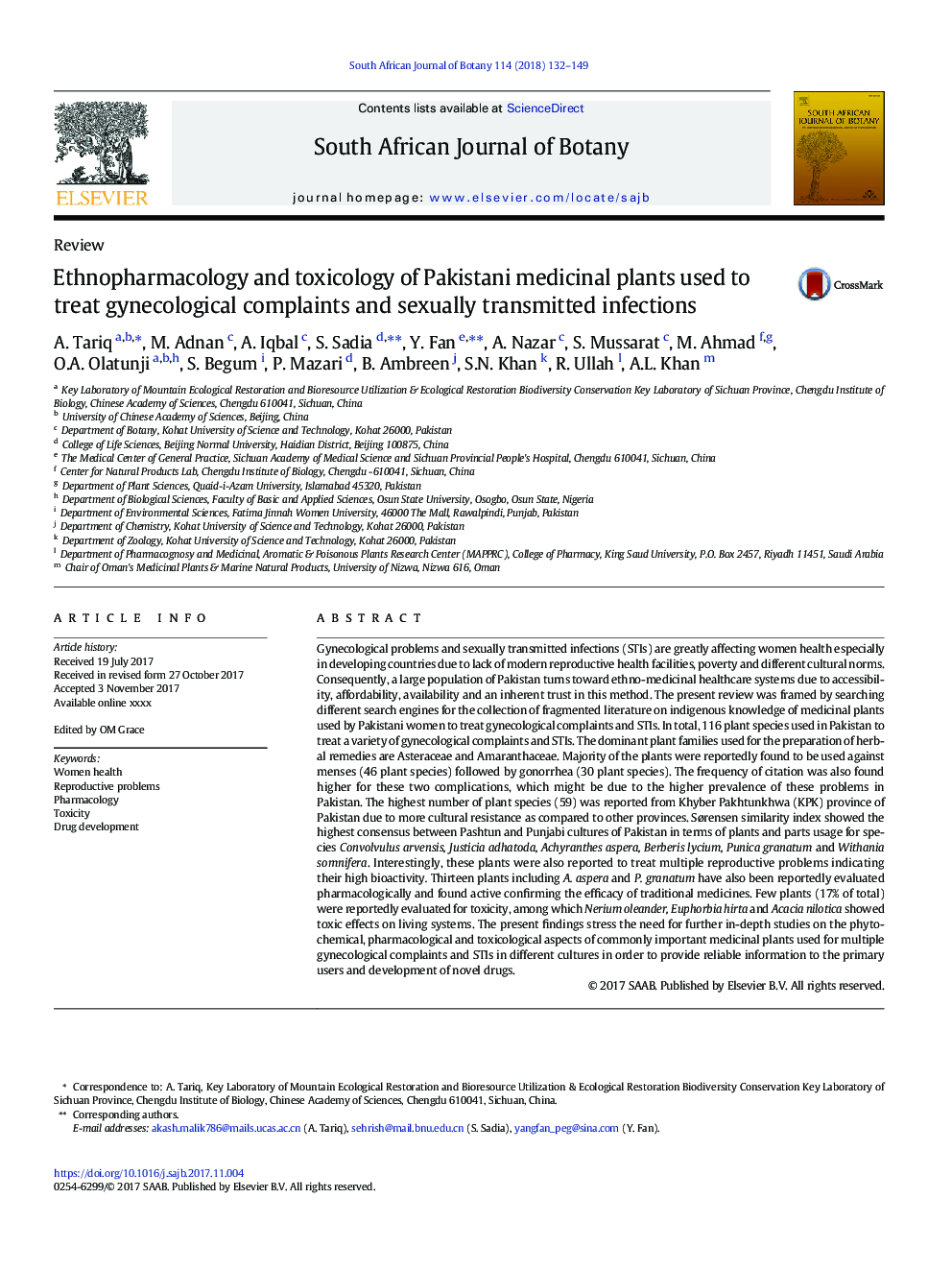| کد مقاله | کد نشریه | سال انتشار | مقاله انگلیسی | نسخه تمام متن |
|---|---|---|---|---|
| 8882409 | 1625144 | 2018 | 18 صفحه PDF | دانلود رایگان |
عنوان انگلیسی مقاله ISI
Ethnopharmacology and toxicology of Pakistani medicinal plants used to treat gynecological complaints and sexually transmitted infections
دانلود مقاله + سفارش ترجمه
دانلود مقاله ISI انگلیسی
رایگان برای ایرانیان
کلمات کلیدی
موضوعات مرتبط
علوم زیستی و بیوفناوری
علوم کشاورزی و بیولوژیک
علوم زراعت و اصلاح نباتات
پیش نمایش صفحه اول مقاله

چکیده انگلیسی
Gynecological problems and sexually transmitted infections (STIs) are greatly affecting women health especially in developing countries due to lack of modern reproductive health facilities, poverty and different cultural norms. Consequently, a large population of Pakistan turns toward ethno-medicinal healthcare systems due to accessibility, affordability, availability and an inherent trust in this method. The present review was framed by searching different search engines for the collection of fragmented literature on indigenous knowledge of medicinal plants used by Pakistani women to treat gynecological complaints and STIs. In total, 116 plant species used in Pakistan to treat a variety of gynecological complaints and STIs. The dominant plant families used for the preparation of herbal remedies are Asteraceae and Amaranthaceae. Majority of the plants were reportedly found to be used against menses (46 plant species) followed by gonorrhea (30 plant species). The frequency of citation was also found higher for these two complications, which might be due to the higher prevalence of these problems in Pakistan. The highest number of plant species (59) was reported from Khyber Pakhtunkhwa (KPK) province of Pakistan due to more cultural resistance as compared to other provinces. Sørensen similarity index showed the highest consensus between Pashtun and Punjabi cultures of Pakistan in terms of plants and parts usage for species Convolvulus arvensis, Justicia adhatoda, Achyranthes aspera, Berberis lycium, Punica granatum and Withania somnifera. Interestingly, these plants were also reported to treat multiple reproductive problems indicating their high bioactivity. Thirteen plants including A. aspera and P. granatum have also been reportedly evaluated pharmacologically and found active confirming the efficacy of traditional medicines. Few plants (17% of total) were reportedly evaluated for toxicity, among which Nerium oleander, Euphorbia hirta and Acacia nilotica showed toxic effects on living systems. The present findings stress the need for further in-depth studies on the phytochemical, pharmacological and toxicological aspects of commonly important medicinal plants used for multiple gynecological complaints and STIs in different cultures in order to provide reliable information to the primary users and development of novel drugs.
ناشر
Database: Elsevier - ScienceDirect (ساینس دایرکت)
Journal: South African Journal of Botany - Volume 114, January 2018, Pages 132-149
Journal: South African Journal of Botany - Volume 114, January 2018, Pages 132-149
نویسندگان
A. Tariq, M. Adnan, A. Iqbal, S. Sadia, Y. Fan, A. Nazar, S. Mussarat, M. Ahmad, O.A. Olatunji, S. Begum, P. Mazari, B. Ambreen, S.N. Khan, R. Ullah, A.L. Khan,